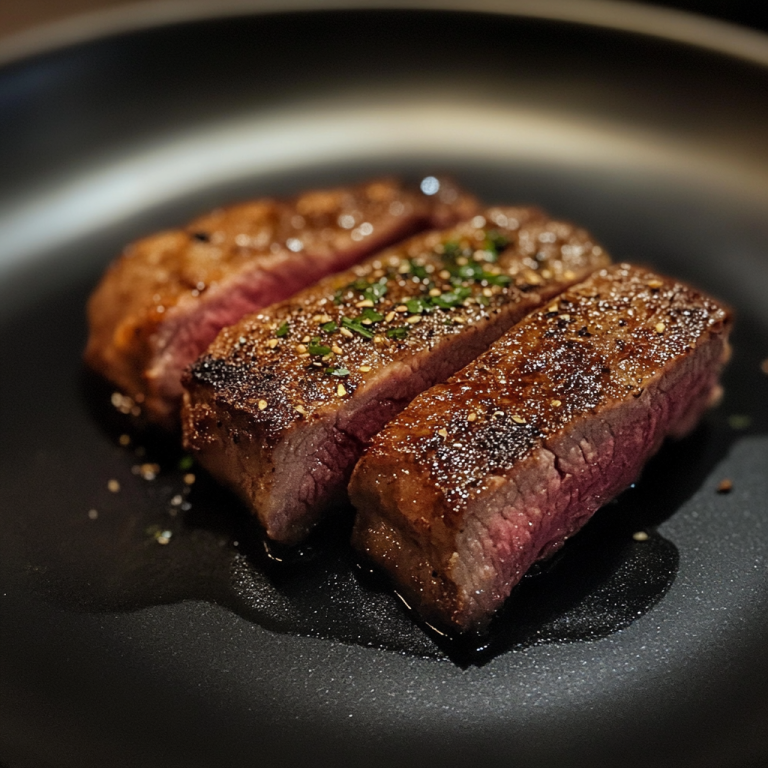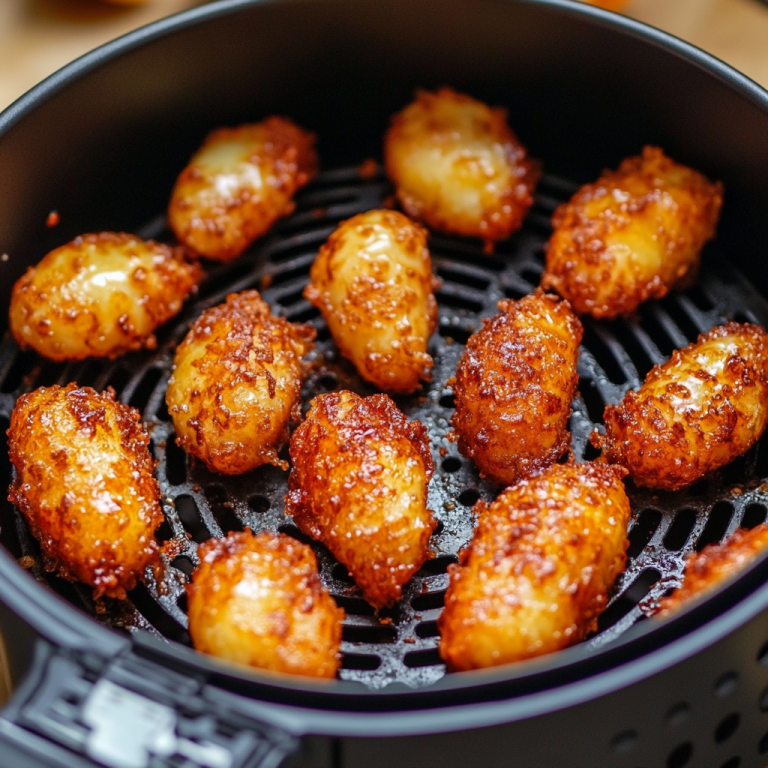Crispy Foods: The Perfect Temperature For Ideal Crunch
Crispy foods are a beloved addition to any meal, delivering that satisfying crunch we all crave. What really makes food crispy? This article explores the science behind crispiness, focusing on the crucial role temperature plays. Discover optimal cooking temperatures for various foods and learn handy tips and tricks to achieve that perfect crunch at home. Additionally, we will address other factors that can influence crispiness, ensuring you enjoy the best textural experience every time. Dive in to unlock the secrets of crispy perfection!
Understanding Crispy Foods
Understanding crispy foods requires an exploration of the scientific principles that contribute to their desirable texture. The allure of crispy items, such as fried chicken, roast potatoes, and crunchy vegetables, extends beyond their flavour; their visual presentation also enhances the overall dining experience. This quality is significantly influenced by various cooking techniques, moisture retention, and the optimal methods of frying or baking employed during preparation. In the field of culinary arts, mastering the technique of achieving a crispy finish is crucial for any aspiring chef.
What Makes Food Crispy?
Food achieves its crispy texture through a combination of factors, including moisture content, cooking methods, and the application of crispy coatings such as breadcrumbs or batter. The transformation of starches during the cooking process is fundamental, as they contribute significantly to the crunchy texture characteristic of many savoury snacks and crispy foods. Various frying techniques, including deep frying and shallow frying, also play a vital role in enhancing both the crispiness and flavour profiles of the dish. For example, when frying items such as crisps, the high temperature rapidly evaporates moisture, resulting in a golden, crunchy exterior. Additionally, the Maillard reaction, which occurs when proteins and sugars undergo cooking together, further enriches the complex flavours found in crispy fried chicken. The ingredients in the batter such as cornflour or rice flour can produce a light, airy coating that highlights the crisp texture. By understanding these scientific principles, home cooks can effectively replicate the desired crunch in their kitchens, whether they are preparing classic onion rings or innovative tempura vegetables.
The Role of Temperature
The importance of temperature in achieving crispy foods is paramount; it significantly influences the overall texture, colour, and safety of the food. A thorough understanding of the ideal frying and oven temperatures is essential for both home cooks and culinary professionals, as improper temperature settings can result in soggy outcomes or insufficient cooking. Furthermore, factors such as thermal conductivity and heat distribution play a crucial role in ensuring that each piece attains the desired level of doneness and crispiness.
How Temperature Affects Crispiness
Temperature plays a crucial role in determining the crispiness of food, as improper frying temperatures can result in undesirable moisture retention or insufficient textural contrast. During the frying process, it is imperative to meticulously regulate the cooking temperature to ensure effective moisture evaporation while allowing the food to develop a desirable golden-brown crust. A comprehensive understanding of the relationship between frying time and temperature is essential for achieving optimal food texture. For example, when frying potatoes, maintaining an oil temperature between 180 C and 190 C facilitates an ideal balance of crispness and tenderness in the interior. In contrast, utilising a lower temperature may lead to greasy, soggy chips. Similarly, baking relies heavily on temperature to achieve the desired results. For instance, adjusting the oven temperature for a cake can significantly influence its moisture levels and crumb structure. A higher baking temperature often produces a beautifully risen, crusty exterior, while a lower temperature may result in a denser texture. Mastering these nuances allows culinary professionals to refine their techniques, leading to the creation of delightful, perfectly textured dishes.
Optimal Temperatures for Different Foods
Optimal temperatures for achieving crispy foods vary depending on the cooking methods and types of food, making it essential to be aware of the appropriate frying temperature range for various recipes. For instance, the ideal frying temperature for achieving crispy chicken or fish generally falls between 175 C to 190 C, which facilitates a delicious golden crust while minimising fat absorption. Similarly, when baking, it is important to understand the suitable oven temperature to attain a crispy finish on items such as biscuits or roasted vegetables.
Recommended Temperature Ranges for Crispy Foods
Understanding the recommended temperature ranges is essential for achieving optimal crispiness when preparing fried foods. Utilising a convection oven can significantly enhance heat distribution, promoting even cooking and ensuring a satisfying crispness on the exterior while retaining moisture within the food. It is crucial to be aware of the specific frying temperature ranges for various items, such as crispy snacks or vegetables, to ensure successful food preparation. For instance, achieving a golden-brown exterior for fried chicken typically requires an oil temperature of approximately 180 C to 190 C, whereas roasted potatoes are best prepared at a higher temperature range of about 220 C to 230 C. Experimentation within these temperature ranges can lead to valuable insights, such as discovering that slightly lower temperatures can produce a softer interior while still maintaining a crunchy crust. Encouraging culinary enthusiasts to conduct trials fosters personalisation in texture and flavour, transforming each meal into a distinct culinary experience.
Tips for Achieving Crispy Foods
Achieving the ideal level of crispiness in foods necessitates the application of various techniques and strategies that enhance both flavour and food quality. This includes making adjustments to recipes to ensure the appropriate ratio of ingredients, as well as employing effective frying methods. These culinary practices can substantially elevate one s cooking skills. Moreover, recognising the significance of seasoning and the use of crispy coatings can greatly impact the final presentation and taste of the dishes prepared.
Techniques and Tricks for Crispy Perfection
Utilising specific cooking techniques can significantly enhance the crispiness of food, and employing tools such as a frying thermometer ensures precise control over frying duration and temperature. Techniques such as double frying are particularly effective for achieving the desired crispy skin on items like fried chicken and crispy potatoes. Conducting food trials to experiment with different frying durations and methods can lead to the ideal texture contrast and finish. Incorporating methods such as air drying or coating the food with cornflour prior to frying further enhances texture and reduces moisture content, resulting in an even crispier outcome. It is also essential to consider the type of oil used, as oils with higher smoke points maintain optimal frying temperatures and enhance flavour. Tools such as digital timers and pressure fryers provide greater accuracy and consistency, facilitating controlled experimentation. As one refines these techniques through methodical trial and error, achieving a satisfying crunch becomes an attainable goal, transforming everyday meals into extraordinary culinary delights.
Factors That Can Affect Crispiness
Numerous factors can significantly influence the crispiness of foods, including the selection of cooking oils and the moisture retention levels of the ingredients used. It is essential to understand how both food temperature and internal temperature affect the cooking process to achieve optimal crispiness. Furthermore, appropriate heat settings during cooking are crucial in determining the success of achieving a golden brown crust and satisfactory texture.
Other Factors to Consider for Crispy Foods
When aspiring to achieve crispy foods, it is imperative to take into account various factors such as fat absorption and the use of frying baskets for optimal cooking results. Conducting different cooking experiments can illuminate how ingredient ratios influence the overall texture and crispiness, enabling culinary enthusiasts to attain a satisfying crunch. Additionally, a comprehensive understanding of food texture enhancement techniques can further refine one’s approach to preparing crispy dishes. Beyond these foundational elements, variations in temperature and cooking time can also have a significant impact on the final product. For example, increasing the frying temperature can facilitate quicker moisture evaporation from the food, thereby enhancing its crispiness, while carefully balancing cooking duration ensures that the interior remains tender. Moreover, adjusting the proportions of wet and dry ingredients can create a delightful contrast in textures, making it beneficial to modify the ratios of flour to liquid as needed. Incorporating techniques such as double frying or using alternative oils can offer unique nuances to the desired crunch, ultimately elevating the overall satisfaction in the preparation of crispy dishes.









